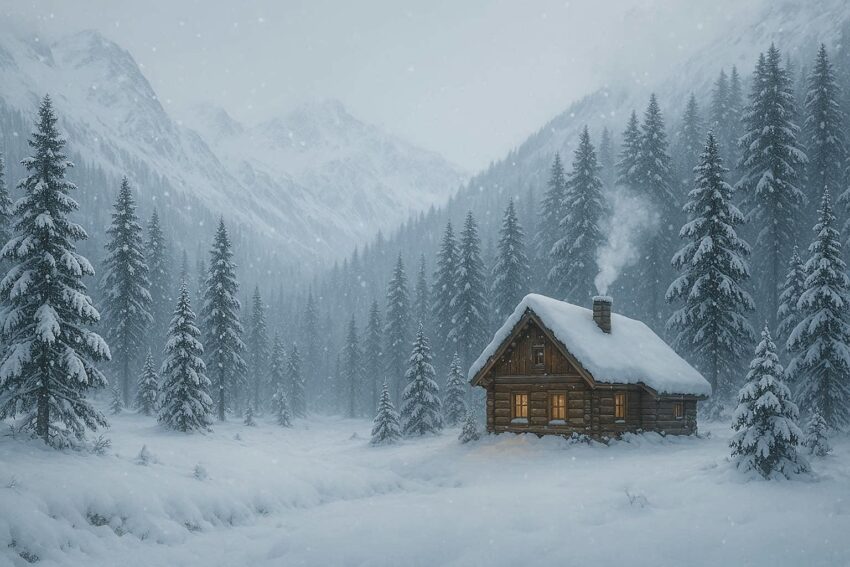Fresh Snowfall in Kashmir, India, Rekindles Hope for a Tourism Revival Amid Economic Challenges
Early snowfall in Kashmir, India, renews optimism for tourism recovery as visitors return to Gulmarg and nearby regions after months of decline.
An early snowfall in Kashmir has stirred fresh optimism across India’s travel and tourism landscape, offering a glimmer of revival for the struggling tourism sector that has faced months of downturn. The famed hill station of Gulmarg, along with other high-altitude regions such as Sinthan Top, Marghan Top, and Gurez Valley, witnessed a thin blanket of snow, transforming the region into a breathtaking spectacle. The India Meteorological Department (IMD) confirmed that light snowfall would persist until Tuesday afternoon, followed by clearer conditions. The sudden onset of snow has not only enhanced the region’s scenic charm but also reignited the hopes of hotel owners, tour operators, and local artisans who rely heavily on the tourism economy. After a turbulent period marked by the Pahalgam terror attack, which drastically impacted tourist arrivals, this natural event has been viewed as a timely reprieve. With the snow-dusted slopes and renewed traveler interest, the Kashmir Valley now stands poised for a potential resurgence in both domestic and foreign visitor engagement.
Kashmir’s First Snowfall Ushers in Renewed Optimism
The early October snowfall across Kashmir, India, has transformed the Valley into a serene winter wonderland. While the plains were drenched by steady rainfall, the high-altitude areas—particularly Gulmarg, Sinthan Top, Marghan Top, Bangus Valley, Zojila Pass, Peer Ki Gali, and the upper reaches of Gurez Valley—were cloaked in a delicate layer of snow. The visual transformation of these landscapes has reignited excitement among travelers and brought hope to thousands whose livelihoods depend on tourism.
The Apharwat Hills in Gulmarg, a popular skiing destination, became an early-season spectacle, drawing small groups of adventurous visitors eager to witness the snow-covered slopes. As images of the snow-clad peaks circulated across social media platforms, curiosity and enthusiasm began to grow among potential travelers from different parts of India and abroad.
Weather Forecast Brings Relief for Tourism Operators
According to Mukhtar Ahmad, Director of the India Meteorological Department (IMD) for Jammu and Kashmir, the weather patterns indicated that the light snowfall would continue in elevated regions until Tuesday afternoon. With improving weather conditions expected thereafter, accessibility to tourist destinations is likely to stabilize, allowing operators to resume normal activities.
The announcement brought a sigh of relief to tourism stakeholders, who had been struggling with a prolonged slump. Clearer skies and improved road conditions are expected to enhance connectivity between Srinagar and surrounding hill stations, a crucial factor for winter tourism. The early snow has also been interpreted as a positive sign for the upcoming skiing season, which typically attracts both domestic travelers and international adventure enthusiasts.
Hospitality Sector Begins to See Early Signs of Revival
In the hospitality sector, optimism is gradually returning. Sharif Ahmad Dar, manager at Hotel Grand Mumtaz in Gulmarg, reported a noticeable uptick in inquiries since the snowfall began. Although the current occupancy rates remain modest, the renewed interest has provided much-needed encouragement for hotels, guesthouses, and travel agencies.
Tourist arrivals, which had plummeted after months of cancellations, are slowly regaining momentum. An estimated 1,500 to 2,000 tourists now visit Gulmarg daily, with the number expected to climb steadily as the winter season advances. Local vendors, transport providers, and guides—who rely heavily on the influx of visitors—are also beginning to experience the benefits of this renewed travel interest.
Tourism Sector Reels from Earlier Setbacks
The recent snowfall comes as a lifeline after one of the most difficult periods for Kashmir’s tourism economy. The Pahalgam terror attack, which claimed 26 lives earlier this year, triggered widespread cancellations and dampened traveler confidence.
Data from the tourism department revealed that in the first half of 2025, tourist arrivals dropped to 750,000, a sharp decline compared with 1.56 million visitors during the same period in 2024. The downturn affected both domestic and international tourism, with foreign arrivals decreasing by 41 percent and domestic visits plunging by 52 percent.
This contraction deeply impacted associated sectors, including local transport services, traditional handicraft markets, and seasonal businesses that thrive during high tourist activity. The new wave of snow has, therefore, come as a crucial opportunity for recovery, not only for hotels but also for Kashmir’s broader economic ecosystem.
Economic Alliance Calls for Renewed Government Support
The Kashmir Economic Alliance (KEA) has emphasized the importance of leveraging this natural event to stimulate wider economic growth. Qazi Tauseef, spokesperson for KEA, highlighted that the early snowfall should be viewed as a pivotal chance to revive hospitality, transport, handicrafts, and retail sectors across the Valley.
The organization has appealed to both national and state authorities to ensure uninterrupted road and air connectivity, particularly during peak tourist months when accessibility becomes critical. They have also called for sustained investment in tourism infrastructure, alongside enhanced promotion of Kashmir’s winter attractions to both Indian and international markets.
The KEA believes that a coordinated response—combining public and private sector initiatives—could help reposition Kashmir as one of India’s premier winter destinations. According to the alliance, maintaining consistent safety standards and promoting responsible tourism practices would be essential in restoring traveler confidence.
Local Businesses Look Forward to a Brighter Winter Season
Across the Valley, small business owners are expressing renewed hope. Hoteliers, tour guides, taxi operators, and artisans anticipate an upswing in activity as the snow season unfolds. The early onset of winter weather is also expected to extend the tourism window, offering visitors more time to plan trips to Gulmarg and neighboring regions.
Local entrepreneurs have begun preparing for a surge in demand for winter gear, ski rentals, and guided excursions. Simultaneously, handicraft sellers in Srinagar’s markets anticipate increased sales as tourists begin to return.
The region’s stakeholders are aligning their efforts to deliver a seamless visitor experience that highlights the Valley’s natural beauty, cultural heritage, and hospitality traditions. By strengthening coordination between local communities and government agencies, Kashmir aims to ensure that the recovery becomes sustainable and resilient.
Kashmir’s Tourism Future: A Season of Renewal
The sight of snow-covered meadows and glistening pine trees has rekindled a sense of optimism not only within the Valley but across India’s tourism landscape. For Kashmir, this snowfall symbolizes more than just the arrival of winter—it represents a potential turning point for an economy that has endured significant challenges.
If supported by stable weather, effective connectivity, and strategic promotion, the upcoming winter season could mark the beginning of a renewed chapter in Kashmir’s tourism narrative. As the region prepares to welcome travelers with its famed warmth and hospitality, the snow-covered hills stand as a testament to resilience, beauty, and the enduring allure of one of India’s most enchanting destinations.
The post Fresh Snowfall in Kashmir, India, Rekindles Hope for a Tourism Revival Amid Economic Challenges appeared first on Travel and Tour World


Comments and Responses
Please login. Only community members can comment.